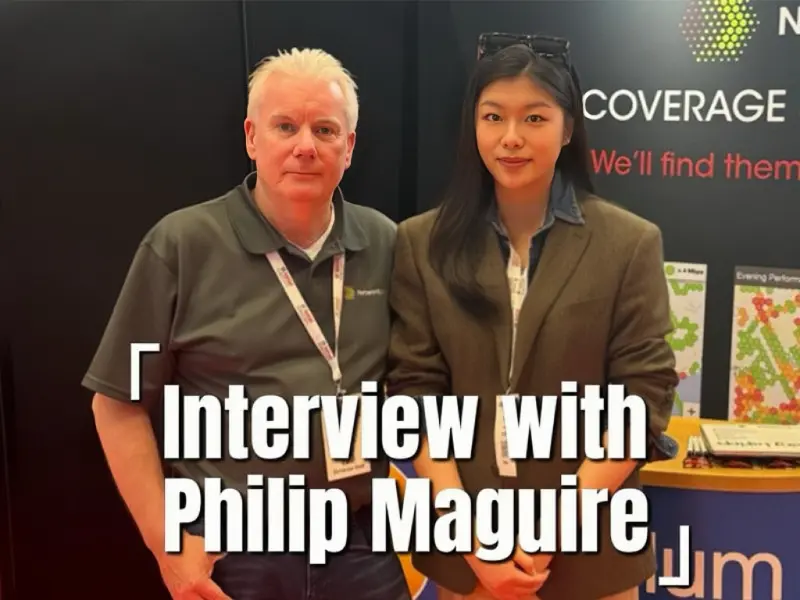- NetworkUX tackles mobile not-spots by surveying urban areas to identify both signal and capacity issues in real time.
- In Westminster, the tool revealed a looming 20% capacity loss, prompting planners to shift how they assess mobile infrastructure applications.
- Founder Philip Maguire highlights customer satisfaction and real-world collaboration as the cornerstones of Inakalum’s success.
Philip Maguire, a veteran in the telecommunications sector since 1981, is the founder and CEO of Inakalum, known for its innovative approach to mobile infrastructure through its flagship tool, NetworkUX. In our interview, Maguire shared how his decades-long journey — from founding Phoneware Ltd. to supporting global institutions like the U.S. State Department — shaped Inakalum’s mission today.
Philip Maguire responded by highlighting his extensive history in the telecoms sector:
“I’ve been working in telecoms since I left school in 1981… In 1995, I set up my own company writing telecom software — that’s 30 years ago this year.” Now CEO of Inakalum, Maguire shared how the company has evolved into a mobile infrastructure innovator. Its latest product, NetworkUX, identifies mobile network weak points — known as “not-spots” — through a sophisticated coverage and capacity surveying system. A standout achievement in his career, Maguire noted, is that one of his patented software products is deployed in every American embassy around the world. “We’ve been supplying the U.S. State Department for over 20 years,” he said proudly.
“Many companies focus too much on profits. I believe in providing extra value… If someone says, ‘I paid for this and got even more than I expected,’ that’s success.”
Philip Maguire, Founder and CEO of Inakalum
Q1: NetworkUX is designed to address mobile not-spots. What are the key challenges mobile operators face in urban environments, and how does your solution help?
Maguire explained that urban mobile performance problems go beyond just signal strength. In fact, capacity issues — where networks are overloaded despite strong signals — are increasingly common in the UK.
“People might see four bars on their phone but experience slow apps or frozen Google Maps — that’s congestion,” he said. To detect these issues, NetworkUX transfers data to a server to analyse upload/download speeds at different times of day, ensuring accurate diagnostics even when congestion is intermittent. It also surveys street assets — such as lamp posts or bus stops — for infrastructure placement, creating a full picture of the urban network environment.
Also read: Connected North 2025: Delivering the north’s connected future
Also read: What is capacity planning and why is it important?
Q2: How do you work with local councils and infrastructure providers to determine whether street assets are suitable for network improvements?
According to Maguire, the process begins with field agents using a smartphone app to capture multi-angle images of assets. AI then classifies these images to determine whether a site is viable for hosting small cells or other equipment. One notable obstacle is the physical environment: “If there’s no parking next to the site, you’d need to close the street for installation — and that takes time and planning permission.” This slows deployment and complicates future maintenance. To streamline this, Inakalum maps suitability data so councils can make informed decisions without even leaving their desks. As Maguire put it, “Then we give operators a list of pre-qualified assets and say: ‘Take your pick.’”
Q3: Can you provide an example of how NetworkUX has improved mobile performance in the UK?
Maguire cited Westminster as a leading case study. While the area had full 4G and 98% 5G coverage, it still suffered from severe capacity issues — which planners had not fully recognised.
What’s more, around 20% of rooftop masts had Notices to Quit (NTQs), meaning landlords would remove them once leases expired — a potential 20% capacity loss. Coupled with mobile traffic growing 10% annually, planners faced a scenario where maintaining existing service quality would become impossible. After reviewing NetworkUX data, planners revised how they assessed infrastructure applications — a critical shift. “That change in mindset was one of the biggest outcomes,” said Maguire.
Q4: What challenges did you face in promoting NetworkUX in the UK market?
Promoting the product meant attending trade shows like Connected North and engaging deeply with industry networks. “You really need to be present, build relationships, and network,” Maguire emphasised. A pivotal moment came when Inakalum partnered with Westminster City Council. Dave Wilkins, a city official, played a key role in shaping how capacity tests were run: “We designed our capacity testing based on what David needed to see.” Promotion through LinkedIn, TechUK seminars, and word-of-mouth has also helped expand Inakalum’s footprint.
NetworkUX stands out not only for its technology but for how it brings clarity and accountability to local governments and operators facing growing demands. By focusing on precise diagnostics and proactive infrastructure planning, it bridges the gap between data insights and real-world deployment. In a saturated telecom market, Inakalum’s focus on trust, human connection, and measurable results makes the company unique. It proves that successful infrastructure development requires not just tools, but partnerships rooted in transparency and adaptability.

